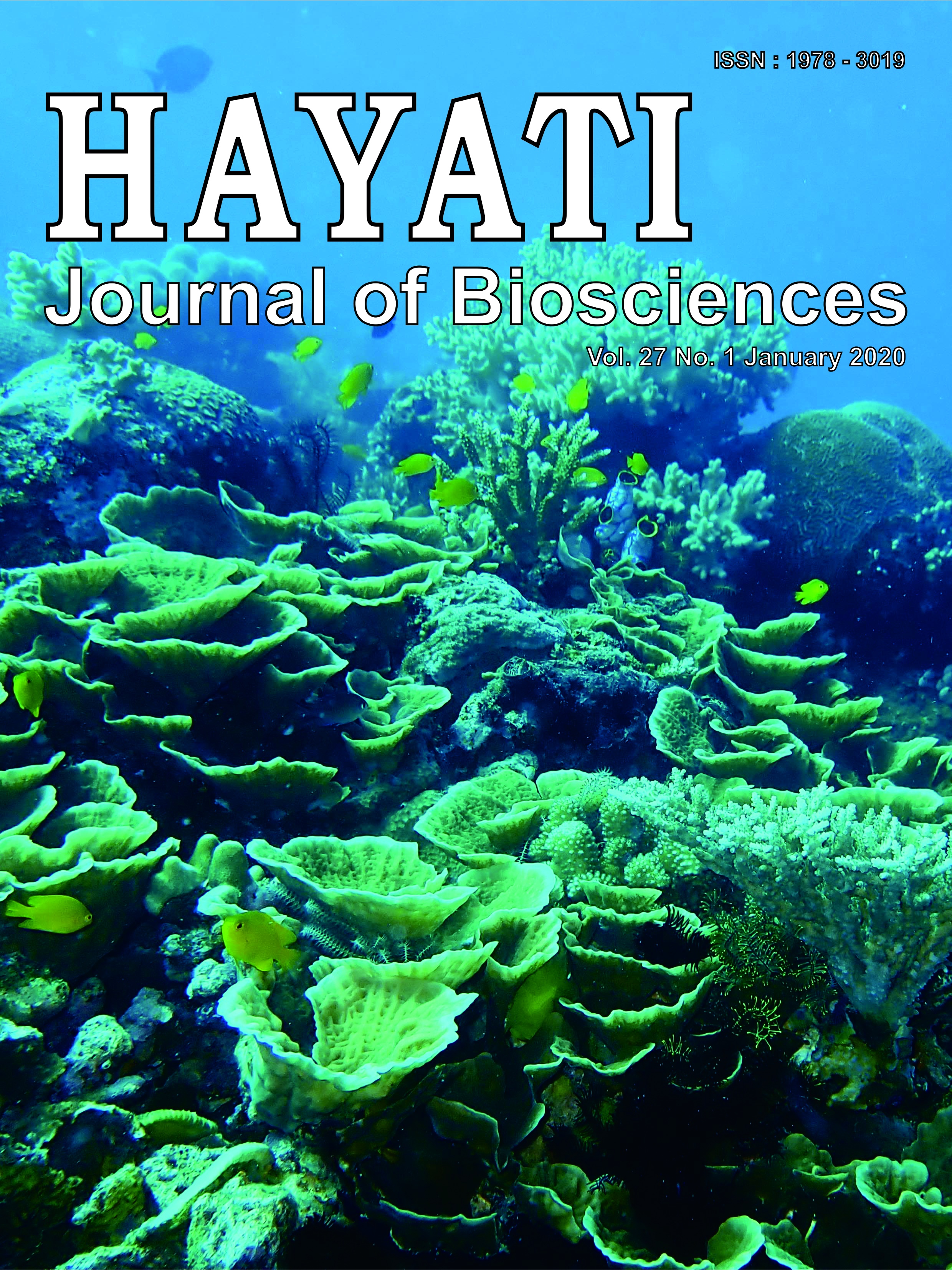Rhizopus Rotting on Agricultural Products in Jakarta
Abstract
Agricultural products may easily perish if they are not well taken care of during postharvest treatment. One of the main causes in damaged products is the biological contamination of pathogenic fungi, such as Rhizopus spp. that gives rise to Rhizopus rot symptoms. The purpose of this research was to isolate Rhizopus spp. from different agricultural products showing Rhizopus rot symptoms as well as to identify them. Rhizopus pure cultures were isolated on potato dextrose agar. Identification was done through molecular techniques using PhytopureTM DNA Extraction Kit and Maxwell® RSC Plant DNA Kit for DNA isolation, internal transcribed spacer (ITS4 and ITS5) as primers for amplification, and molecular evolutionary genetics analysis 7 (MEGA7) for the reconstruction of phylogenetic tree from sequence result. The phylogenetic tree using Maximum Likelihood statistics with 1,000 replications of bootstrap test showed five strains, namely AR9, AR10, AR11, AR13, and AR14, which belong to R. delemar, and the other seven remaining strains, AR1-AR7 belong to R. stolonifer. Identification was clarified with morphological and physiological data using Rhizopus growth at temperature control of 33 and 42°C as well as microscopic observation involving rhizoid, columella, measurement of sporangiospores, and sporangiophores.
Downloads
HAYATI J Biosci is an open access journal and the article's license is CC-BY-NC. This license lets others distribute, remix, tweak, and build upon author's work, as long as they credit the original creation. Authors retain copyright and grant the journal/publisher non exclusive publishing rights with the work simultaneously licensed under a https://creativecommons.org/

























.png) IPB University
IPB University Department of Biology
Department of Biology The Indonesian Biological Society
The Indonesian Biological Society 

